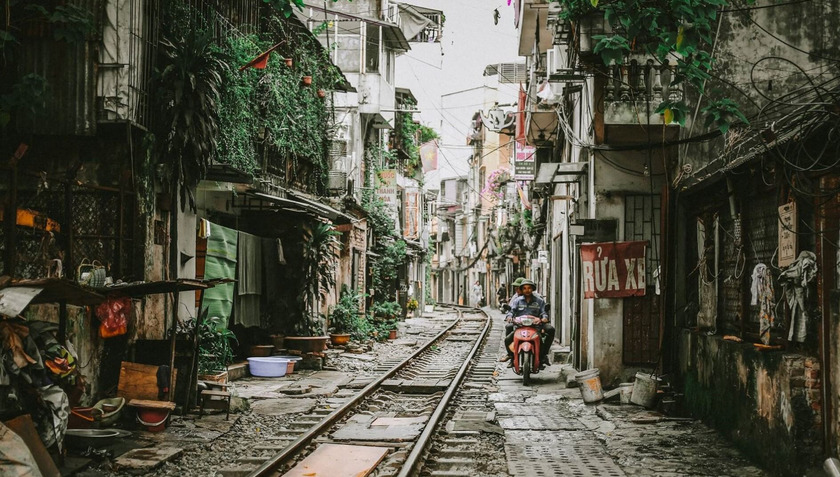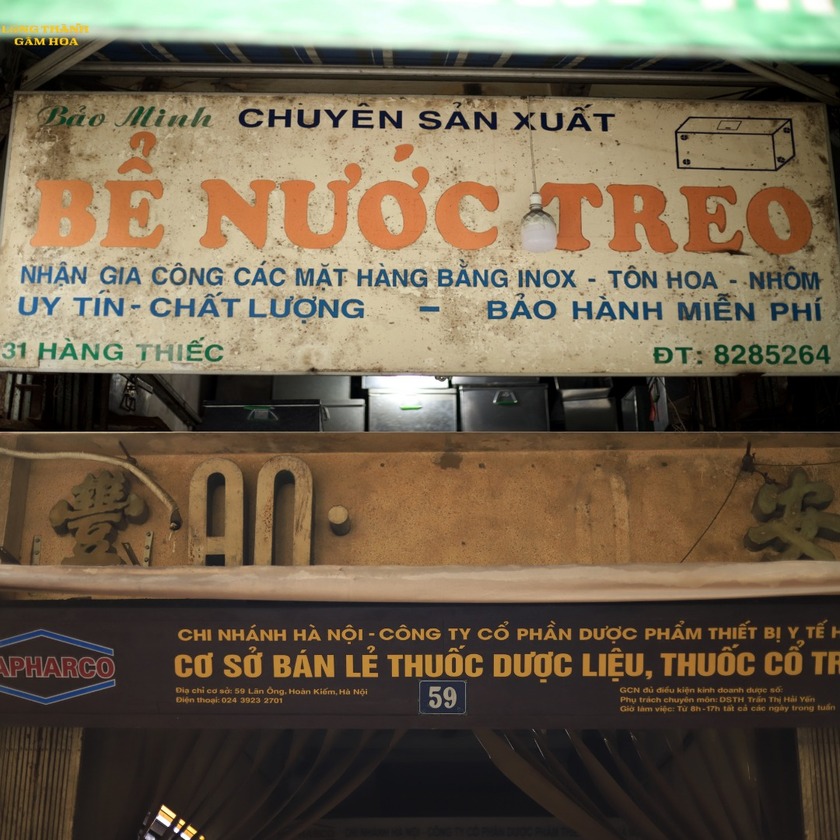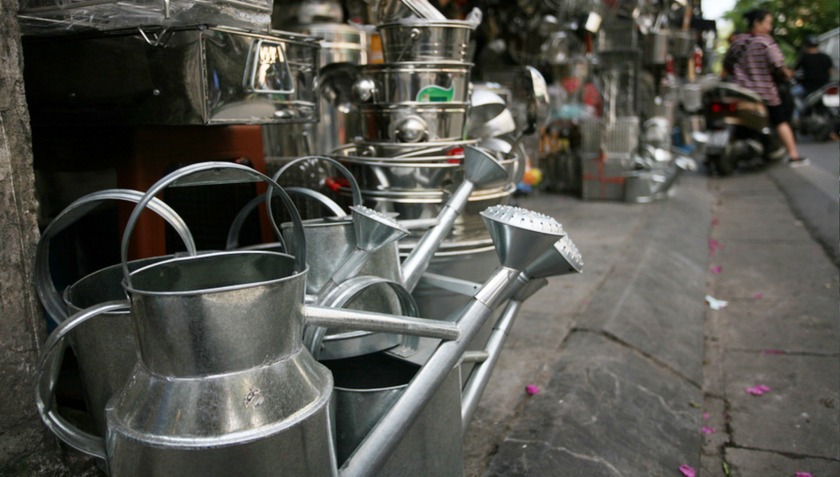Hang Thiec is listed among the 36 old streets of Hanoi with its tin casting and household goods making. Today, the sound of hammering and welding still resonates, creating a unique and distinctive feature for the people here.
Hanoi is beautiful through the "Hang" streets
Hanoi's 36 streets are a colorful picture, where traditional and modern beauty intersect. Each street has its own unique characteristics, from the colorful Hang Ma street to the sophisticated Hang Bac street, from the quiet Hang Luoc street to the bustling Dong Xuan street. Coming to the 36 streets, visitors will feel like they are lost in a magical world, where they can discover unique cultural values, enjoy delicious food and learn about the lives of Hanoians.

Hanoi Old Quarter - A characteristic of the Capital City
Hanoi 36 streets is a living architectural museum, where traditional and modern beauty converge. Ancient houses with mossy tiled roofs and rough brick walls tell stories of a golden age. The typical tube house architecture, with shop fronts, has created a unique living and working space.

Here are the streets that have left historical marks of the capital city.
Some researchers have assessed that the French planning of the old town in the early 20th century was a combination of Western architecture and local climatic conditions to create a “unique” old town in the Southeast Asia region. In particular, the old town was a major trading “center”, where many religious and indigenous beliefs and long-standing customs and practices were still preserved.

Peaceful Hanoi Old Quarter lies in the heart of the bustling and bustling capital
What makes Hanoi culture praised by many people is the "character" of the people here. Hanoi's "quality" is often simple, discreet, sophisticated but still gallant and elegant. The basic characteristic in the communication culture of Hanoi people is the attitude of valuing communication, taking emotions as the principle of behavior. While talking, "original" Hanoi people pay attention to the communication object, often ask, observe, and evaluate the other person meticulously. The way of communication is gentle and tactful with the support of rituals.
Old profession in old town
Hang Thiec, a small, peaceful corner in the heart of ancient Hanoi, still retains its traditional beauty through the changes of time. Located humbly in the old quarter, this small street is like a living museum, preserving the cultural values of the ancient Hanoians. The sound of hammering and soldering resounds regularly, blending into the ancient space, creating a deep, quiet symphony. Each house on Hang Thiec Street has its own story, its own mark, telling of a golden age of traditional crafts.

Nestled humbly in the old quarter, this small street is like a living museum.
The street is 136 m long, starting from Bat Dan - Thuoc Bac intersection to Hang Thiec - Hang Non intersection, in Hang Gai ward, Hoan Kiem district, Hanoi. The old street is located on Yen Noi village, Tien Tuc commune, Tho Xuong district.
In the past, Hang Thiec Street was famous for its exquisite handicrafts made from tin. Incense burners with billowing incense smoke, teapots, trays for cups... were familiar images in every Hanoian family. That's why the French named the street Rue des Ferblanties (Street of tinsmiths). But Hanoians still call it by its old name Hang Thiec.

Hang Thiec is listed among the 36 old streets of Hanoi with its profession of tin casting and making household items.
However, over time, the demand for tin products gradually changed. The talented craftsmen here quickly adapted and switched to making tin products. Old kerosene barrels were reborn into washing basins, ladles, water buckets... both convenient and full of folk character. Although the street name has changed over time, in the hearts of Hanoians, Hang Thiec is still the address of unique handicraft products, associated with many memories.

The sound of hammering and welding still resonates every day, creating a unique and distinctive feature for locals and tourists every time they pass by.
Later, street workers also made products from corrugated iron and zinc to create durable and beautiful household products. In recent years, many stores have sold products made from new materials such as stainless steel to serve family life.

Hang Thiec Street is one of the craft streets with typical products of old Hanoi.
In the 1930s and 1940s, this was the golden age of Hang Thiec Street, which was considered a home for talented artisans. The sound of hammers and soldering resounded loudly, blending with the calls of customers from mirror and glass shops. The small, narrow street suddenly became unusually bustling and busy. Each house was a craft workshop, each craftsman was an artist, together creating unique products to serve the lives of Hanoians. Although time has passed, Hang Thiec Street still retains its own charm, a testament to the persistence of traditional crafts.



































